Cyclamen, known for their striking appearance and vibrant colors, is a favorite among plant enthusiasts. With delicate blooms and charming heart-shaped leaves, it brings a touch of elegance and grace to any indoor space.
While these plants make for lovely gifts and elegant home decor, their care can sometimes be a bit of a challenge. However, fear not – with the right knowledge and a bit of tender loving care, you can create an optimal environment that encourages your cyclamen to thrive.
In this article, we’ll explore the art of nurturing cyclamen flowers, covering everything from ideal growing conditions and watering tips to maintaining their health and encouraging reblooming. Take your time with us, and you’ll gain the confidence to cultivate these enchanting flowers.
#1. Position
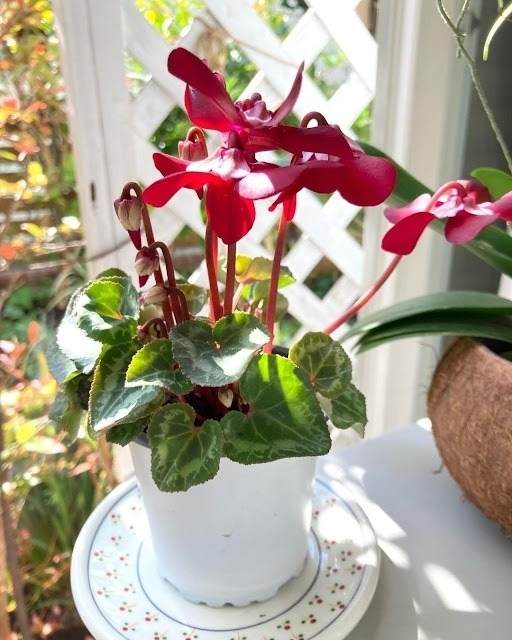
Cyclamen prefers bright, indirect light. You should place the plant near a north or east-facing window where it can receive filtered sunlight but avoid direct exposure to intense afternoon sun, especially during hot summer months. In terms of temperature, it likes cooler temperatures ranging from 50°F to 68°F (10°C to 20°C). In addition, keep them away from drafts, heating vents, and radiators, as excessive heat can cause stress to the plant.
If the air in your home is very dry, you can increase humidity around the plant by placing a tray filled with water and pebbles nearby. As the water evaporates, it will create a more humid microclimate.
#2. Soil
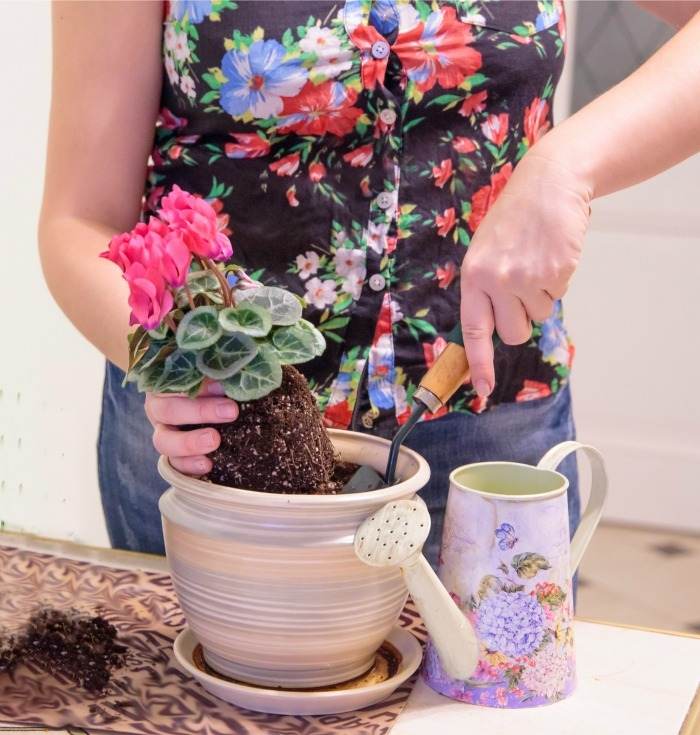
Cyclamen thrives in well-draining soil. You should use a high-quality potting mix specifically designed for indoor plants or mix potting soil with perlite or sand to improve drainage.
#3. Fertilizing and pruning
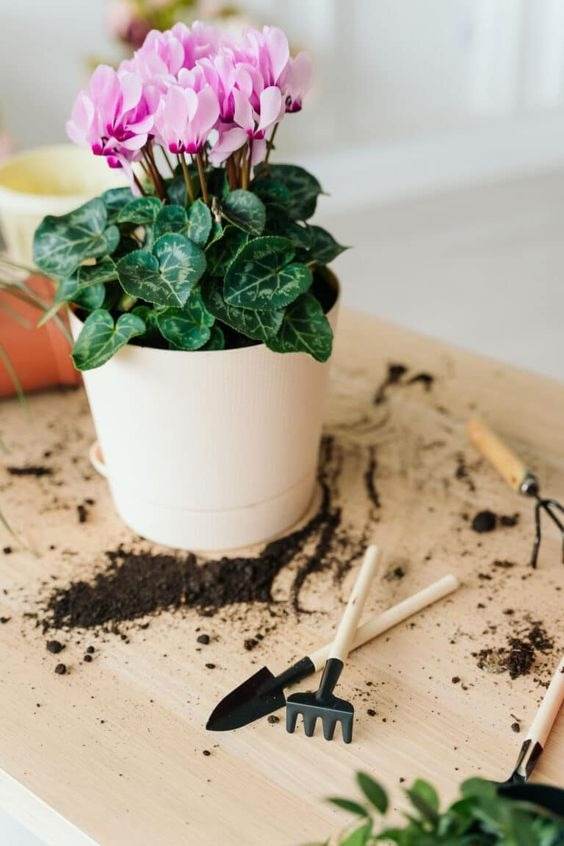
During the flowering period, you can use a balanced liquid fertilizer diluted to half-strength. To facilitate healthy growth and blooming, apply the fertilizer every 2-4 weeks.
When pruning, remove faded or dead flowers by gently pinching or cutting them off. This encourages the plant to put energy into producing new blooms.
#4. Watering
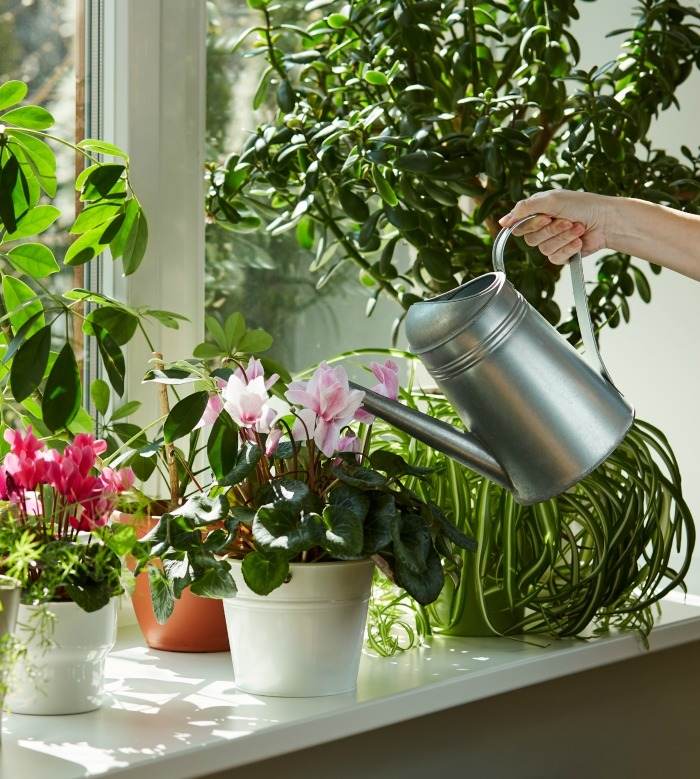
Cyclamen requires watering thoroughly but sparingly. You should ensure the top inch of soil dries out slightly between waterings. Like other plants, overwatering can lead cyclamen to root rot, so it’s essential not to let the plant sit in standing water. Placing the pot in a tray of pebbles and water can allow the roots to absorb the water better.
#5. Blooming
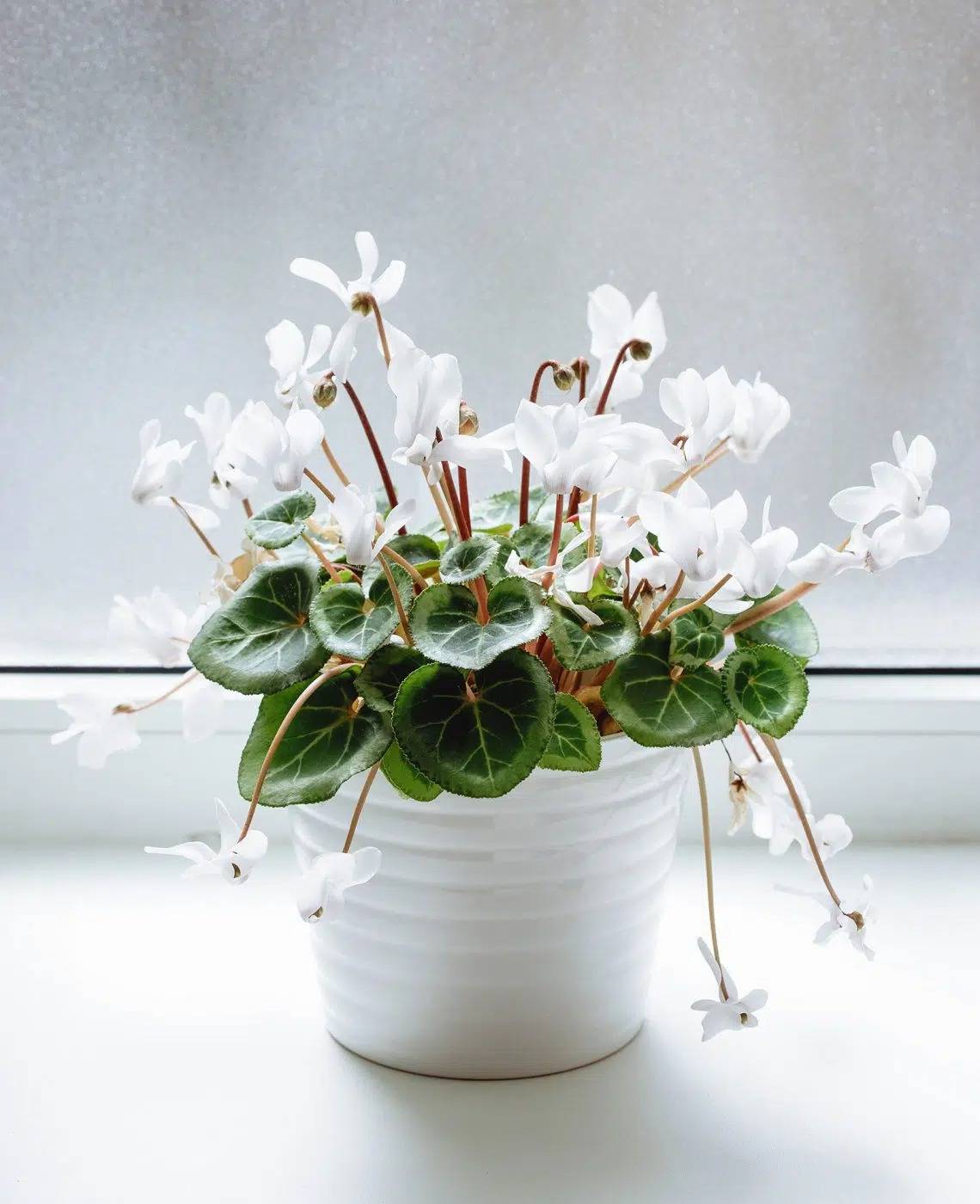
During blooming, you should regularly remove faded or wilted flowers by gently pinching or cutting them off. This encourages the plant to put energy into producing new blooms. After blooming, it enters a dormant season, during which you should gradually reduce watering and stop fertilizing.
#6. Problems and solutions
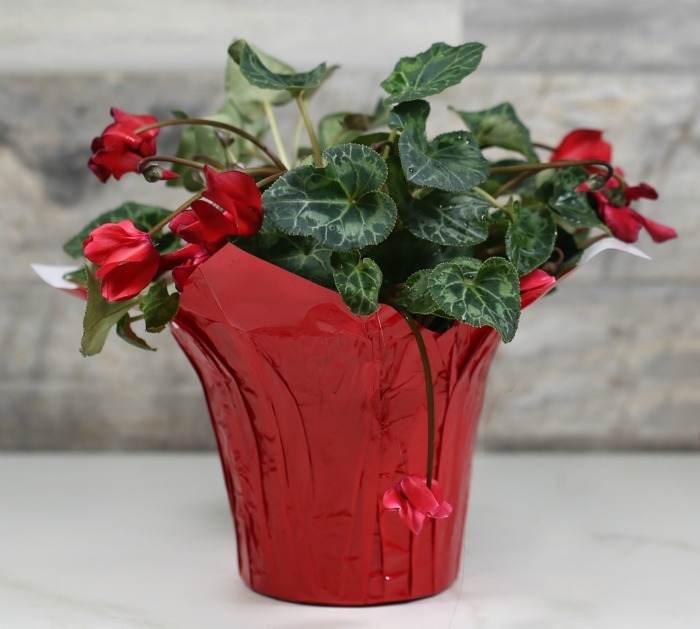
Indoor cyclamen may encounter some common problems that can affect their health and appearance.
Excessive watering can lead to root rot, yellowing leaves, and wilting. To avoid overwatering, you should ensure proper drainage by using a well-draining soil mix and a pot with drainage holes. Cyclamen may fail to produce blooms due to inadequate light, improper dormancy, or other stress factors. To handle it, you should place flower pots in a position full of bright, indirect light during the blooming period.
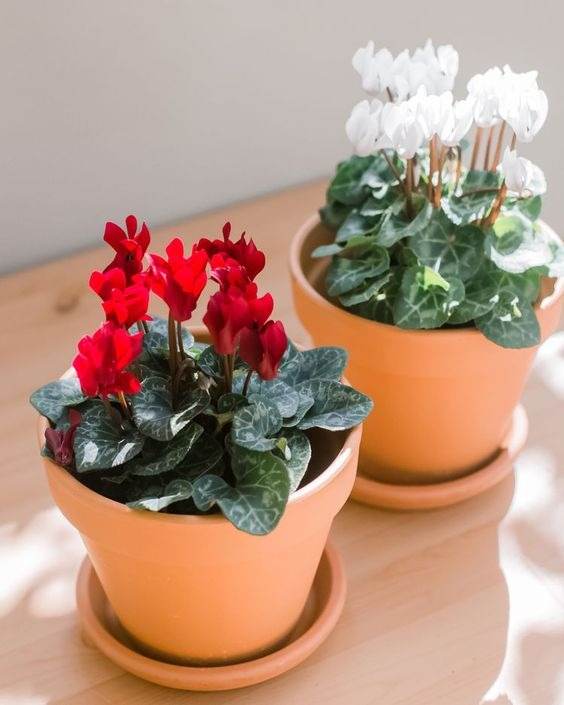
Another problem is that cyclamen is attacked by common indoor pests like spider mites, aphids, and thrips. To prevent attacks, you should inspect the plant regularly for signs of pests, such as webs, sticky residue, or damaged leaves. Treat the infestation with insecticidal soap or neem oil, following the manufacturer’s instructions.
Cyclamen flowers are a true treasure, known for their captivating blooms that resemble whimsical shooting stars floating above the heart-shaped foliage. After going through the articles, we hope you found our comprehensive guide on caring for cyclamen flowers helpful and informative! If you enjoyed learning about the art of nurturing other elegant blooms, don’t forget to like, comment and wait for our other expert tips.
